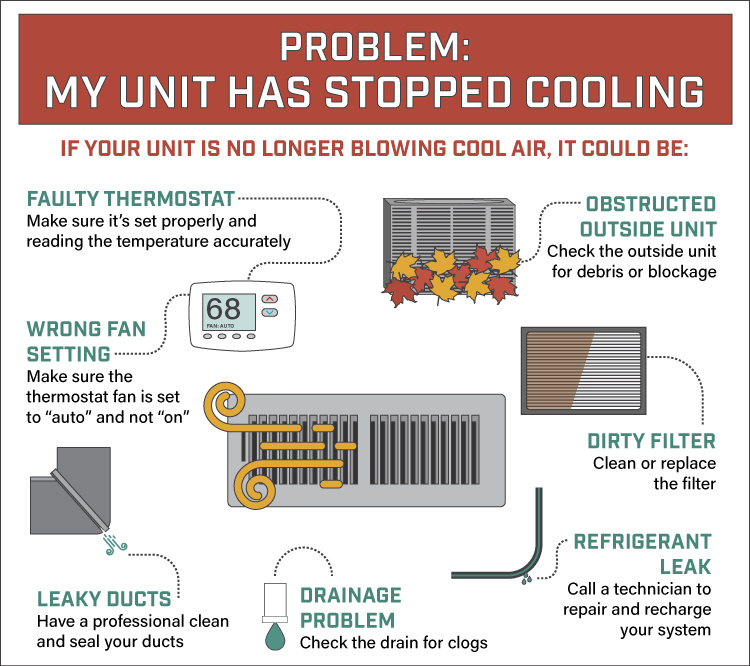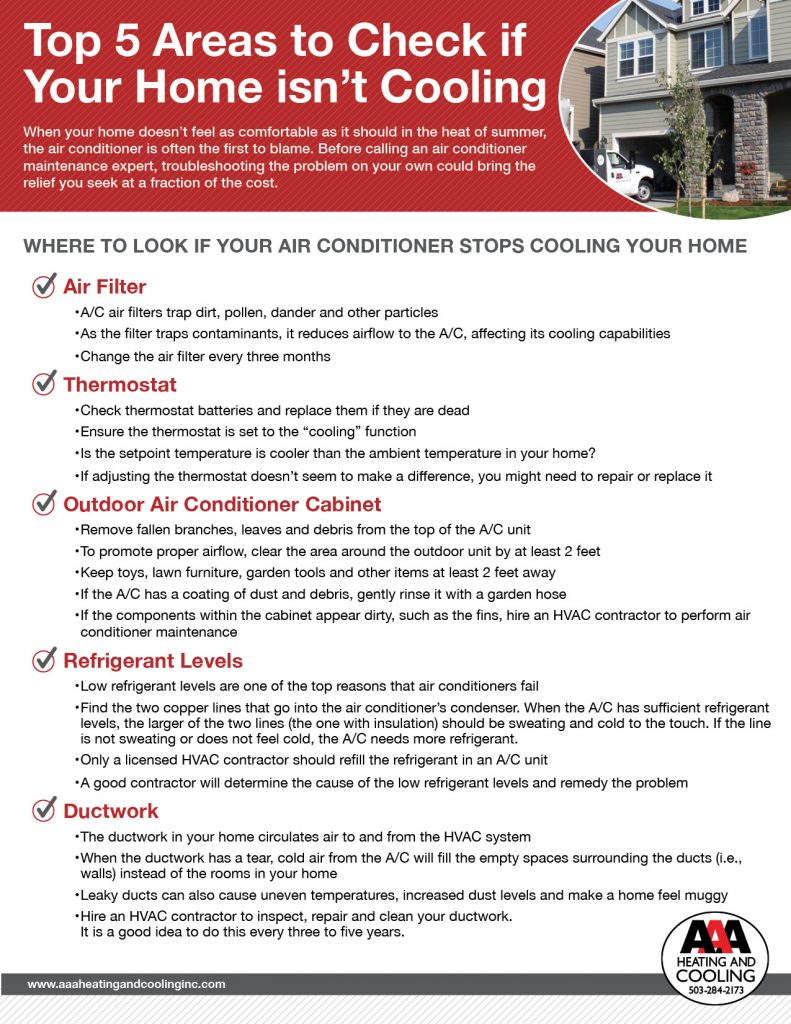
Feeling too warm in a home that has the air conditioner running is uncomfortable and frustrating. It can seem even more annoying if the A/C unit is newer or recently repaired. When temperatures in your home rise, the air conditioner might not be at fault. Troubleshooting can seem overwhelming but with our simple tips, we can help. Here are the 7 most common reasons preventing your house from cooling down:
-
Heat Gains from Windows
-
Leaking Ductwork
-
Thermostat Problems
-
Insufficient Insulation
-
Insufficient Refrigerant
-
Debris Surrounding the A/C Unit
-
Air Filter Replacement
Keep reading below for more information on the 7 most common and how you can troubleshoot your air conditioning unit that isn’t cooling. Troubleshooting the cause might result in a simple fix or an issue that a local Portland air conditioning expert can remedy without repairing or replacing the cooling system. Learn more about what we can help you with on our air conditioning page. Our checklist identifies the top 5 areas to troubleshoot if your air conditioning unit isn’t working. Download our checklist by clicking on this link:[download id=”3815″]
Why Is My Home Hot When the Air Conditioning is on?
Heat Gains from Windows
When sunlight shines through a window and makes a room feel warmer, it is experiencing a heat gain. This tends to happen in homes with older windows. While the warmth feels nice in the winter, it can turn a room into a sauna in the summer, even with the A/C running.
A quick fix is to draw the blinds during at least the hottest part of the day and use heavy blackout curtains. Some homeowners also install low-emissivity film on their windows that have reflective particles that block UV rays and reduce heat gains.

If having the curtains open is a must, upgrading to high-efficiency units, like double or triple pane windows, will significantly reduce heat gains during the summer and keep your home warmer during the winter by preventing heat losses.
Leaking Ductwork
When there are tears in ductwork, cool air will escape into the unoccupied areas of your house, like the walls or roof. Portland air conditioning contractors inspect ducts using a camera or visible nontoxic smoke. If there are leaks, a technician will often repair it right away.
Thermostat Problems
Verify that your thermostat does not need new batteries. Then ensure that it is set to the “cooling” position or function. While in the cooling settings, verify that the setpoint temperature is cooler than the temperature outside. In general, 68°F is a comfortable temperature.
If these solutions don’t seem to work, you might need to repair or replace the thermostat. An HVAC technician can repair the device. If you need a replacement and have DIY skills, you can purchase a thermostat at a home improvement store and replace it yourself. Or, hire an HVAC contractor to replace it for you.
Insufficient Insulation
Just as insulation prevents warm air from escaping your home in the winter, it keeps cold air from escaping during the summer. At the same time, it also absorbs the sun’s heat to reduce solar gains in your home. In your attic, the insulation should be at about the same levels as the wall studs and floor joists, the beams of wood that run parallel on the floor. If the studs and joists are overly exposed, you need more insulation.
The simplest type of insulation to install on your own is roll and batt, which comes in big rolls at home improvement stores. Foam-in-place (sometimes called spray insulation), rigid foam and loose-fill insulation are also good options that a licensed professional can install.
When choosing insulation, consider its R-value, which indicates its resistance to heat. The higher the R-value, the greater the insulating properties. The ENERGY STAR website recommends that Portland homes use insulation with an R-value of R38 to R60 in un-insulated attics. When an attic already has a few inches of insulation, adding R38 insulation to it is a good choice.
Insufficient Refrigerant
The refrigerant with in an A/C changes from a liquid to vapor as it conditions the air that passes through it. As this occurs, the larger of the two copper lines that go into the condenser will sweat and feel cold to the touch. If there isn’t enough refrigerant because of a leak, the copper line will feel warm and the A/C won’t cool the air effectively. Rather than refill the refrigerant reservoir, hire an HVAC expert to replace it, as this solution is more environmentally friendly and cost-effective.
Debris Surrounding the A/C Unit
When an air conditioner doesn’t have sufficient airflow because of dirty evaporator or condenser coils or because of vegetation surrounding it, it won’t cool your house well. Keep vegetation at least 2 feet away from all sides of the unit. If you haven’t already done so in the last 12 months, hire an HVAC technician to clean and inspect the other components.
Air Filter Replacement
Replace the A/C’s air filter as often as the manufacturer recommends. With time, dust, pollen and other debris clog the filter and obstruct airflow. If air doesn’t flow through the vents well, your house will feel warm.
As you maintain and inspect your home seasonally, adding your Portland air conditioning unit to the checklist will help it run optimally during the summer. Keep things cool with our tips and resources. If you tried the solutions listed and your home still feels too warm, call AAA Heating & Cooling to schedule a complimentary estimate. Schedule an appointment here and learn more about the team.
Click on the link to download the checklist [download id=”3815″]
Photo by Ray Bodden via CC Licensing
